Uber says it received 5,981 reports of sexual assault in 2017 and 2018. Among those, there were 464 reports of rape. The report also noted there were 19 deaths caused by physical assault during 2017 and 2018. The report showed that about 92% of the victims of rape were riders and about 7% of the victims were drivers. Women and female-identifying individuals made up 89% of the victims with men and male-identifying individuals comprising about 8% of victims. Less than 1% of victims identified as gender minorities. The other four categories of sexual assault defined by Uber — including non-consensual kissing, non-consensual touching and attempted rape — did not detail whether the reporting parties were victims. Lyft said it would release its own safety report but it has not indicated when.
Uber also released “early estimates” for the first six months of 2019. It estimated that one out of every 6 million trips may result in an incident report concerning non-consensual sexual penetration, and one in every 900,000 trips may result in an incident report concerning non-consensual touching of a sexual body part. Based on these estimates, and Uber’s own estimate that it has 45 rides every second in the US alone, there were more than 100 reports of rape, and nearly 800 reports of non-consensual touching of a sexual body part, in the first half of 2019. The first half numbers are subject to change, due to factors such as auditing and late reporting.
The ride hailing app has repeatedly been criticized for not taking passenger safety seriously, and for ignoring reports of rape and sexual assault by its drivers. The company incidents of sexual assault are rare, as the company averages more than 3 million trips each day. The report only covers Uber’s U.S. operations. Critics say Uber should be doing more, particularly with background checks, to weed out potentially dangerous drivers. Unlike many taxi companies, Uber and its main U.S. rival, Lyft, do not check drivers’ fingerprints against a national database. Uber says the FBI has acknowledged its database is incomplete and does not always include a final disposition. The company’s process includes a motor vehicle screening, a criminal background check and ongoing notifications about any new offenses. An added fingerprint check, which can’t be faked, could add precious time to the driver-approval process.
A U.S. House committee is looking at legislation that could reduce the number of sex assaults involving ride-hailing passengers and drivers by requiring fingerprint background checks, camera monitoring and front license plates for ride-hailing cars in states that don’t have them. This would help prevent fake ride-hailing drivers from picking up passengers by making it easier for passengers to check plate numbers against the ones provided by Uber and Lyft. There could be limits on what federal legislators can do because ride-hailing companies conduct interstate commerce, but that is new legal territory.
Uber has been making efforts to improve safety over the last two years, including an in-app emergency button, a ride-check feature that detects unexpected stops or crashes and the ability for riders or drivers to share their location with loved ones during a ride. The company outlined additional safety steps it will take in the report. Both Uber and Lyft are promising more safety initiatives to try to prevent sexual assault during ride-sharing trips by better educating drivers. In 2020, Uber plans to expand sexual misconduct and assault education for all U.S. drivers and is working with the Rape, Abuse & Incest National Network or RAINN, the nation’s largest sexual violence organization, to design the program. Uber wants to share the names of drivers who have been banned from the platform with other ride-sharing companies. Lyft also is working with RAINN on a safety education program, which drivers are required to complete, according to Lyft’s web site. In October, Lyft teamed up with security company ADT to develop new safety features in nine markets for early 2020. Both companies offer in-app access to 911.
Read more
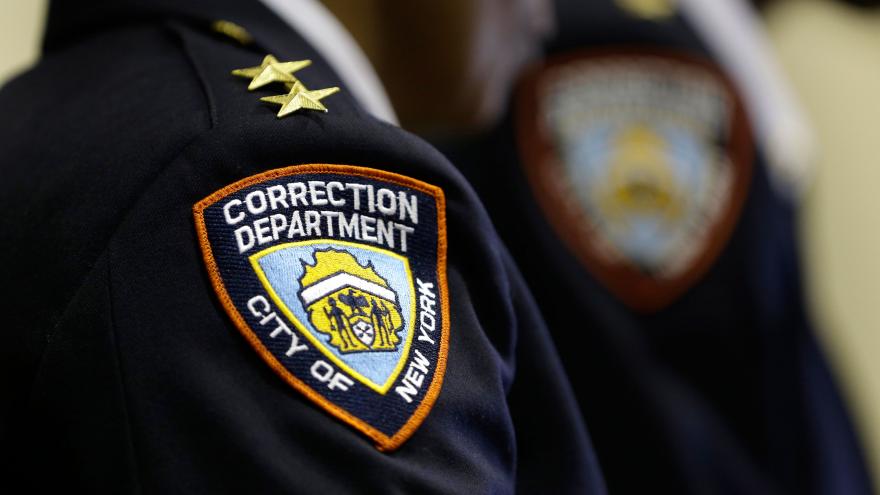
Four Rikers Island correctional officers were suspended for allegedly waiting several minutes to rescue an inmate who had tried to hang himself in a cell, authorities and law-enforcement sources said. Surveillance The video showed the officers stood by for seven minutes while a teenager attempted to hang himself. Video shows one officer even walked up to the holding pen where the teenager was hanging, opened the door, then closed the door and walked away without intervening. The city’s Department of Investigation opened an inquiry into the incident.
The guards — three correction officers and one captain — are accused of inaction during the near-fatal incident when Nicholas Feliciano, 18, allegedly attempted to hang himself at the George R. Vierno Center at about 12 a.m. on Nov. 28. The captain had witnessed the incident on surveillance footage and went to the inmate to cut him down, sources said. Feliciano was rushed to a nearby hospital in critical condition with no brain activity and remains in a medically induced coma. The 18-year-old had been jailed in Rikers since November 19th when he was arrested on a parole violation. Feliciano had been in an altercation at the jail earlier in the day of suicide attempt and had been moved from general population into a holding cell by himself.
Video footage of the suicide attempt described to the Times shows him wrap one end of a piece of clothing around his neck and another to a pipe on the ceiling of the cell. He then stepped off a wall that separates the toilet from the rest of the cell and hangs from his neck. At one point during the attempt, Feliciano appeared to have second thoughts and struggled to get his feet back on the wall. He hung from the pipe for about seven minutes before he was rescued. The area of the attempted suicide was in view of a guard desk where officers can monitor activity through video feeds. The actions of the officers were recorded by a separate camera.
Rikers Island has housed jail inmates since the 1930s and has long been known for brutality. The jail complex saw hundreds of stabbings every year during the 1980s and early 1990s. In 2014, an Associated Press investigation detailed dozens of inmate deaths including that of a homeless ex-Marine who essentially baked to death in a hot cell. In 2016, “60 Minutes” correspondent Bill Whitaker reported that a lack of adequate training and a rising mentally ill population have made an already bad situation in the jail worse. New York City lawmakers voted in October to close the Rikers Island jail complex, which has become synonymous with violence and neglect, and replace it with four smaller jails in separate boroughs by 2026. The plan has been met with pushback from communities where the new jails would be located.
Read more

In recent years, it’s become evident that oil giant Exxon was aware of the causes and consequences of climate change from at least the 1970s, but chose to deliberately mislead the public for decades. A newly resurfaced article now shows coal industry executives equally understood the science of catastrophic global warming as far back as 1966. According to a copy of the magazine Mining Congress Journal, leaders of the coal industry knew as early as the mid-1960s that burning fossil fuels causes climate change.
The head of a now defunct mining research company wrote that the combustion of fossil fuels was increasing carbon dioxide in the atmosphere, causing global temperature increases. The recently discovered article now provides evidence that both the coal and oil industries have known about catastrophic climate change for decades, yet worked to cover up the evidence in order to continue burning fossil fuels.
James Garvey, the then-president of Bituminous Coal Research Inc., which developed pollution control equipment, discussed the state of pollutants and their regulation in the coal industry at the time. While much of the paper is concerned with sulphur in coal, a small section early in the article is concerned with carbon dioxide (CO2) discharge. “There is evidence that the amount of carbon dioxide in the Earth’s atmosphere is increasing rapidly as a result of the combustion of fossil fuels,” Garvey writes.
“If the future rate of increase continues as it is at the present, it has been predicted that, because the CO2 envelope reduces radiation, the temperature of the Earth’s atmosphere will increase and that vast changes in the climates of the Earth will result. Such changes in temperature will cause melting of the polar icecaps, which, in turn, would result in the inundation of many coastal cities, including New York and London.”
Garvey’s article isn’t the only one acknowledging the dangers of coal-produced pollution in the August 1966 issue. In a discussion piece following Garvey’s paper, combustion engineer James Jones from Peabody Coal (now called Peabody Energy, the largest private coal company in the world), does not address the global warming issue, but admits that air pollution standards to protect health have a place, saying the “Situation is Urgent”.
Jones wrote “We are in favor of cleaning up our air. We are, in effect, ‘buying time’. But we must use that time productively to find answers to the many unsolved problems.” In the decades to come, Peabody would become a huge industrial player in organized climate change denial. At the end of his article, Jones wondered: “What can an individual with a personal stake in the future of the coal industry do?” Among the answers he offered, “Be a ‘one-man’ public relations emissary for the coal industry,” Jones explained to his industry colleagues. “Tell your neighbours, friends, and the general public how important coal is to their every-day existence. Also tell them about the all-out cooperative efforts of the coal industry to reduce air pollution.”
The concerted effort to discredit the scientific consensus over man-made global warming has been continuing for two decades in the United States and shows no sign of weakening. It is often described as an attempt on the part of corporate America, most notably the fossil fuel industries, to hinder governmental regulations on their activities.
Read more
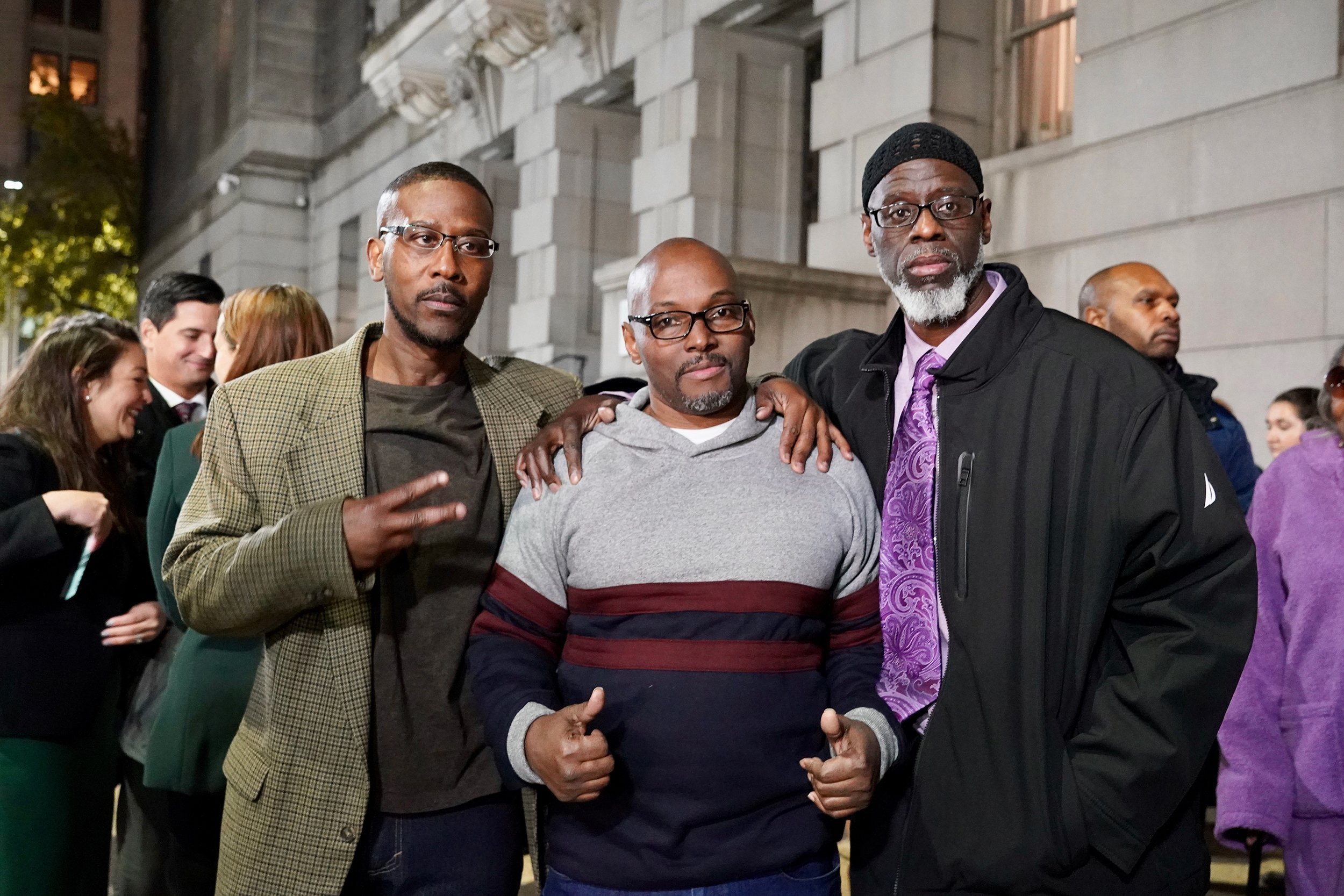
Three Baltimore men who spent 36 years in prison were released after authorities say they were falsely convicted of a 1983 murder. Alfred Chestnut, Ransom Watkins and Andrew Stewart were granted a writ of innocence after being convicted of first-degree murder of a middle school student, DeWitt Duckett. According to police, Duckett, 14, was shot and killed for his coveted Georgetown University basketball jacket in November 1983.
Chestnut has maintained his innocence since his arrest and the parole board denied his early release in part because he refused to admit responsibility for the shooting, the state’s attorney said. After he filed an information request this past spring, he discovered new evidence that was kept from his attorneys during trial. He reached out to Baltimore’s Conviction Integrity Unit, which was reviewing old convictions.
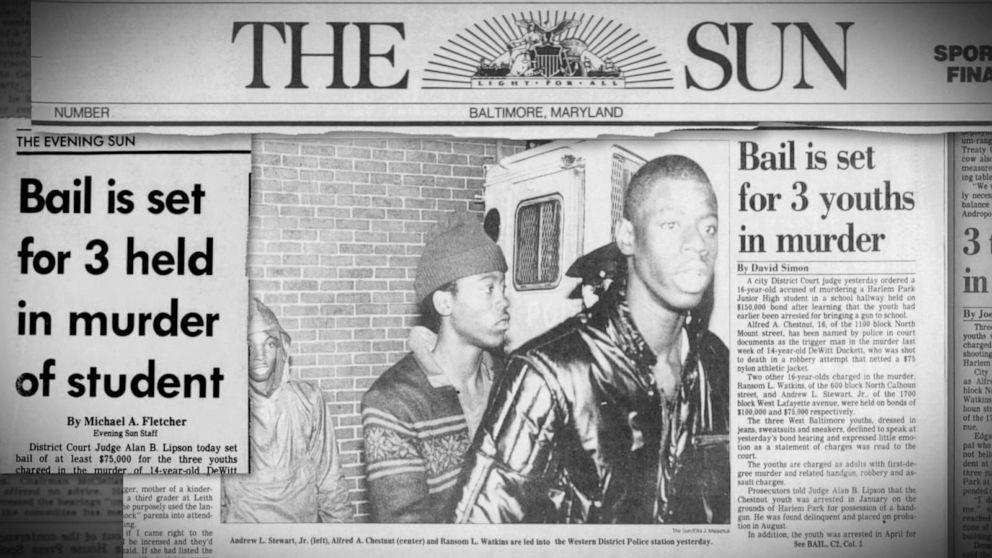
Chestnut and Watkins were 16 at the time of their arrest and Stewart was 17. The three teenagers had been skipping high school classes to visit former teachers at Harlem Park Junior High. Their teachers said they were being “silly,” but not threatening. School security escorted them off campus about half an hour before the murder occurred, according to a joint petition filed by the men and Baltimore City State’s Attorney Marilyn Mosby.
Watkins lawyer said the three teenagers were each arrested Thanksgiving morning, waking up with police with guns drawn on them. They were convicted based on witness testimony and what prosecutors at the time said was a crucial piece of evidence — a Georgetown jacket found in Chestnut’s bedroom. Chestnut’s jacket had no blood or gunshot residue and his mother was able to produce a receipt. A store clerk also testified that she had purchased it recently, the joint petition said.
Lawyers involved in the case said they were “horrified” to see the amount of exculpatory evidence that was hidden from the defense team and jury. Both the suspects and trial witnesses, all minors, were interrogated by police without their parents. Potential witnesses were interviewed in a group and told to “get their story together,” according to Chestnut’s lawyers. Anonymous calls identifying another shooter were kept from the defense, Mosby said. That teenager was seen after the shooting wearing what appeared to be Duckett’s jacket and confessing to the murder, she said. That suspect has since died and all trial witnesses have since recanted. “We have intentional concealment and misrepresentation of the exculpatory evidence, evidence that would have showed that it was someone else other than these defendants,” Mosby said.
Mosby apologized to the men “I don’t think that today is a victory, it’s a tragedy. And we need to own up to our responsibility for it,” Mosby said. “There’s no way we can repair the damage to these men, when 36 years of their life were stolen from them. You were all arrested on Thanksgiving 1983. Now you are free to spend the holidays with your loved ones for the first time in 36 years,” Mosby said in a press conference. The men are now in their early fifties preparing to enter adulthood on the outside for the first time and at least two have never driven a car before. Now, late in life, they will experience a world very different from the one they were barred from since their teens.
Read more
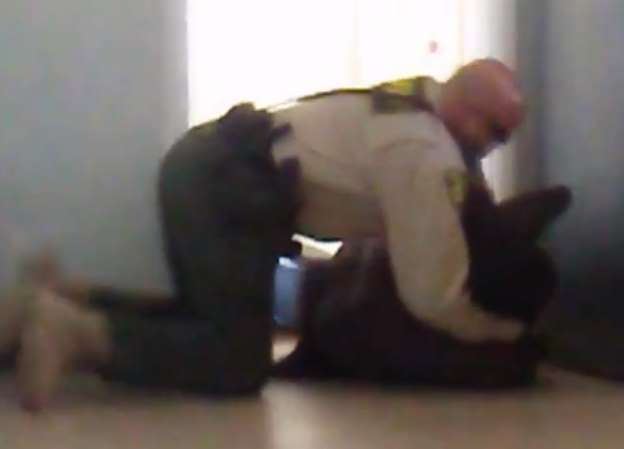
An Arizona sheriff’s deputy has been placed on administrative leave after disturbing cellphone video footage surfaced showing the deputy tackling and pinning a 15-year-old quadruple amputee to the ground. The incident sparked an internal affairs investigation by the Pima County Sheriff’s Department and a spokesman for the sheriff’s department said Deputy Manuel Van Santen was placed on leave pending the investigation.
The Sept. 26 incident started when the 15-year-old, who was in a group home after being abandoned by his family, allegedly knocked over a garbage can and verbally threatened a worker. Van Santen was called to the group home to restore order. In the video, Van Santen is seen holding the boy down for more than a minute as the teen struggles to break free. The deputy is shown in the video kneeling next to the amputee and putting the teen in a headlock. The teen can be heard becoming more upset, asking the deputy not to hold him down.
When Van Santen loosened his grip, the boy attempted to break free but did not get far before the deputy tackled him, wrapping his arms around the teen to subdue him. Eventually, the boy stops protesting and the officer lets him get up, asking him what his problem is, and why he kept moving when he was told not to move. As the 15-year-old insists he doesn’t have a problem and only threw a trash can, the deputy gets louder, bending over so that his face is inches away from the teenager’s as he yells and swears at him.
The teen recording says to the deputy, “Hey, you asked him a question, and he answered,” he tells the deputy. “Shut the hell up!” the deputy snaps back. He orders the teen out of the room and the boy responds that he can’t eat his cereal in his room. The deputy storms over, screaming at him to stay out of something that doesn’t involve him. “You shut the hell up!” he yells again. Both teens were arrested on disorderly conduct charges but Arizona prosecutors dropped disorderly conduct charges against the quadruple amputee.
Pima County public defender Joel Feinman said the incident likely would not have come to light if it had not been recorded by another teen living in the home since Van Santen was not wearing a body camera. It is not clear how long the incident lasted, as the 8 minute video began in the middle of the struggle. Feinman said the 16-year-old boy who recorded the incident had his head pushed into a wall by deputies during the incident. “These are kids who have already been traumatized in some way,” Feinman, whose office is representing both boys. “Men with badges should not be acting this way,” Feinman told the television station. “Men and women who do act this way should not have badges and guns.”
Feinman stated that given that Immanuel has no legs and is missing most of his arms — and wasn’t even wearing a shirt, making it unlikely that he could have somehow been hiding a concealed weapon –it is hard to fathom that he posed a threat to “this very large policeman with a badge and a gun.” Regardless of what the teenager said to the officer, he argues, the better response would have been to sit down and try to de-escalate the situation.

Read more
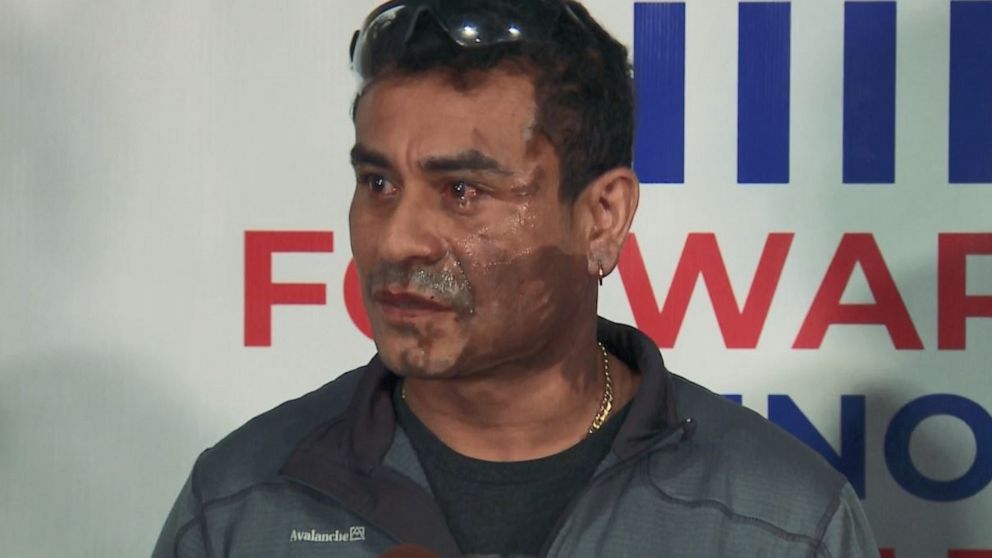
A Milwaukee man faces a felony hate-crime charge for an alleged acid attack on a man who says he was targeted for his Latino identity and left with second-degree burns. Clifton Blackwell, 61, has been charged with first-degree reckless injury in a hate crime using a dangerous weapon. Reckless injury carries up to 25 years in prison and $100,000 in fines. Prosecutors are pursuing hate crime and dangerous weapon enhancements charges which means Blackwell could face stiffer penalties, including up to 10 more years’ imprisonment.
At a news conference the day after the assault, Mahud Villalaz, 42, said he parked his truck outside a restaurant at 8:30 p.m. and began to walk toward it to have dinner when a man at a nearby bus stop approached him and chastised him for parking in a bus lane. Villalaz said, the man asked why he’d “invaded” the United States and said “Why don’t you respect my laws?”
Realizing he was parked too close to a bus stop, Villalaz moved his truck to another spot and headed toward the restaurant. Blackwell re-engaged him saying “Why did you invade my country?” calling Villalaz an “illegal” and cursing at him while telling him to “go back.” He told Blackwell that “everyone comes from somewhere first” and pointed out that “American Indians have been in the country the longest,” court filings state. Villalaz said that’s when Blackwell got angry and tossed the acid, which was in a small silver bottle, in his face. The attack was caught on surveillance video.
Villalaz was taken to the hospital with second-degree burns to his face, cheek and neck, as well as damage to his clothing, according to police. Testing showed that acid caused the injuries. The attack took place just outside the restaurant doors. Witnesses say Villalaz, a regular at the restaurant, burst through the doors crying with his face searing with acid. The restaurant staff tried everything to wash the acid from his face until paramedics arrived.
Villalaz, who says he grew up in Peru and immigrated to the United States as a young man – became a citizen in 2013. He said he felt relieved charges were filed and thankful at the nationwide support he’s gotten. “It’s been nice to know that there are many people here that worry about other people. Not only Latinos … people of all colors. We must unite,” Villalaz said.
During a search of Blackwell’s home, police found hydrochloric acid, four bottles of sulfuric acid and two bottles of drain opener made of lye, according to court documents. Blackwell’s bond has been set at $20,000 on the condition that he wears an electronic monitoring device. He is also forbidden from contact with acids or large batteries. Court records indicate Blackwell has previously been convicted of false imprisonment and pointing a gun at a person.
According to the criminal complaint, on Nov. 19 2006, Blackwell confronted four men, two with rifles, who had come onto his farm tracking deer in the Town of Lawrence. Blackwell pointed a loaded rifle at the men and told them to disarm, then marched them back to his house where he photographed their faces and hunting tags. He told them they were guilty of criminal trespass and called the sheriff’s office but wound up charged himself. Prosecutors dropped one of each of the charges, and Blackwell pleaded no contest to one count each of pointing a firearm and false imprisonment. He was sentenced to 379 days in jail. Blackwell’s mother said he had served in the Marine Corps during the U.S. invasion of Panama in 1989 and had moved back to Wisconsin for treatment for PTSD type problems. Officials with the Marine Corps Manpower and Reserve Affairs office in Virginia said it could find no record of Blackwell ever serving in the Marines.
Read more

A Manhattan judge has dismissed Uber Technologies Inc’s lawsuit challenging a New York City law limiting the number of licenses for ride-hailing services, the first such cap by a major American city. New York State Supreme Court Justice Lyle Frank rejected Uber’s argument that the city wrongly gave its Taxi and Limousine Commission power to enforce the cap.
Frank was also unconvinced that the cap, part of Local Law 147, would impede state efforts to reduce traffic congestion through “congestion pricing” on vehicles entering high-traffic areas of Manhattan. The August 2018 law was meant to give New York City greater oversight of ride-hailing companies such as Uber and Lyft Inc. It includes a one-year freeze on new licenses to for-hire vehicles, which was later extended through August 2020.
The law, which the City Council passed, required the Taxi and Limousine Commission (TLC) to conduct a one-year study on the possibility of regulating the number of for-hire vehicle licenses and to stop issuing new for-hire vehicle licenses for that year. The study, which was released in June, found that reductions on FHV-related traffic could “meaningfully impact overall traffic conditions.” The one-year cap was then extended this past summer.
Uber’s lawsuit argued, among other things, that the city exceeded its authority in enacting the law because the state allows the city to cap taxis but not app-based or other for-hire vehicles. But Judge Lyle E. Frank said in his decision to toss the lawsuit that the City Council acted within its rights when it allowed TLC to adjust the number of for-hire vehicle licenses.
Bill Heinzen, acting TLC commissioner, said in a statement “We are grateful the court has again recognized the TLC’s power to address the problems that companies like Uber have created by flooding the streets of NYC. Drivers are bringing home an additional $750 a month on average because we fought back against their tactics, and the Mayor and TLC will continue to fight for less congestion and better pay for drivers.”
The legislation also allows New York City to set a minimum wage for drivers with Uber, Lyft and other ride-hailing services. The case is separate from Uber’s Sept. 20 challenge to a New York City “cruising cap” rule limiting how much time its drivers could spend without passengers in Manhattan south of 96th Street.
Uber has drawn criticism from many cities that its vehicles increase congestion, and commandeer business from taxis. The value of medallions, which are permits needed to operate yellow taxis in New York City and are distinct from ride-hailing licenses, has plunged as Uber and Lyft gained popularity. Taxi workers have long supported measures like the cap on for-hire vehicles to reduce the amount of vehicles driving around the city, as they face crippling amounts of debt due to a dramatic decrease in the value of medallions.
Read more
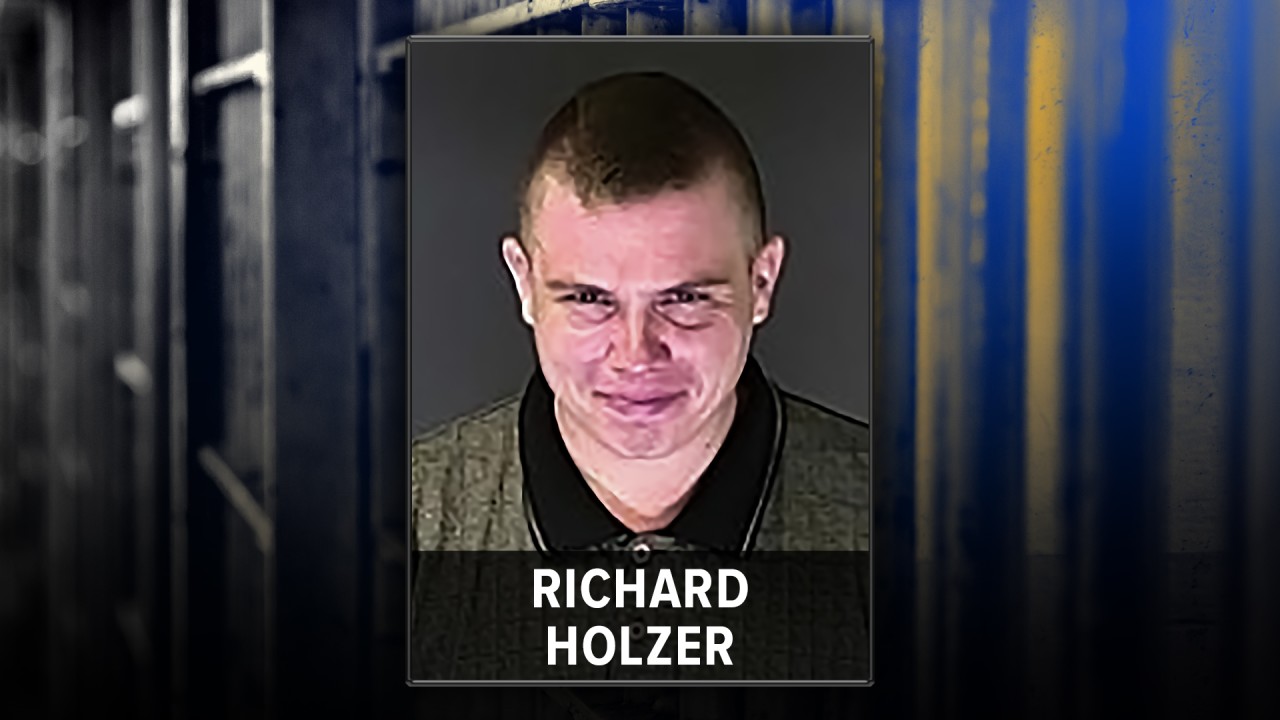
The FBI has arrested a 27-year-old Colorado man who was allegedly planning to bomb a synagogue in Pueblo. Court documents say Richard Holzer was arrested after he examined fake pipe bombs that had been prepared by co-conspirators who turned out to be undercover agents. His arrest came just two days before his planned bombing of The Temple Emanuel synagogue in Pueblo, Colorado.
“After being contacted by undercover FBI agents posing as fellow white supremacists, Mr. Holzer indicated that he wanted to do something that would let Jewish people in the Pueblo community know that they are not welcome and that, according to him, they should leave or they will die,” U.S. Attorney for the District of Colorado Jason Dunn said.
Undercover FBI agents had been tracking and interacting with Holzer since late September after he came on their radar for continually talking about killing Jews in online forums. The investigation of Holzer began after an undercover FBI agent purporting to be a woman who supports white supremacy contacted him on Facebook in September. Holzer allegedly sent the agent pictures and video of himself with guns and images related to white supremacy.
Agents say Holzer once wrote on Facebook, “I wish the Holocaust really did happen… they need to die.” According to court documents, Holzer messaged the undercover agent about initiating a racial holy war and said with was going to Temple Emanuel “to scope it out.” He told the agent that he planned to poison the synagogue with arsenic-something he claimed to have done before, but ultimately wanted to shut the synagogue down and condemn it.
That agent arranged for him to meet with friends who were actually more undercover agents on Oct. 17 in Colorado Springs. He allegedly talked to them about his plan before volunteering that he could use Molotov cocktails on the building when asked what other methods he was considering to shut down the building. The FBI claims that Holzer was the first person to mention using explosives during the meeting. After they visited the synagogue later that day, the affidavit says Holzer observed that Molotov cocktails would not be enough, and he and the agents then discussed using pipe bombs, which the agents offered to supply.
During a meeting where the agents brought what Holzer thought were live explosives, he described them as “absolutely gorgeous” and said they should go ahead with the attack overnight to avoid police, the court document said. The agents arrested him during that meeting.
The Temple Emanuel synagogue is the second-oldest in Colorado and was completed in 1900, according to Temple Emanuel’s website. It has a congregation of about 30 families and a rabbi from Denver who travels two hours away to Pueblo twice a month.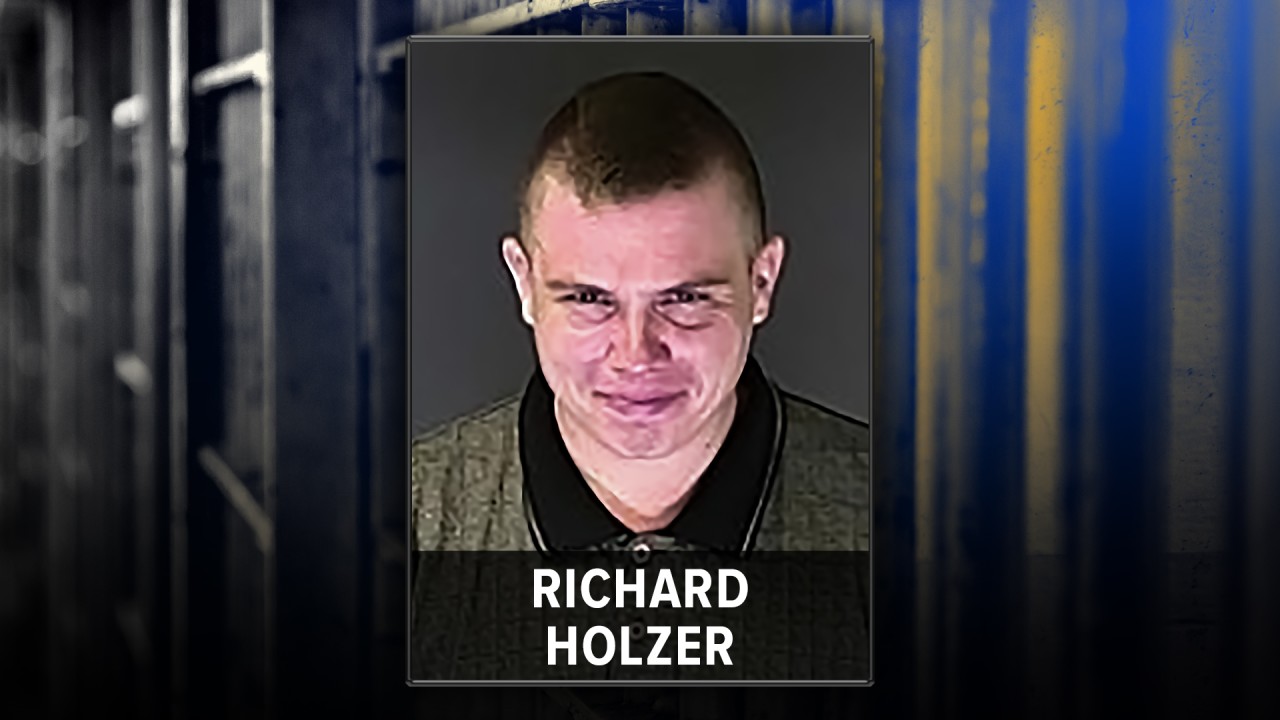
Read more
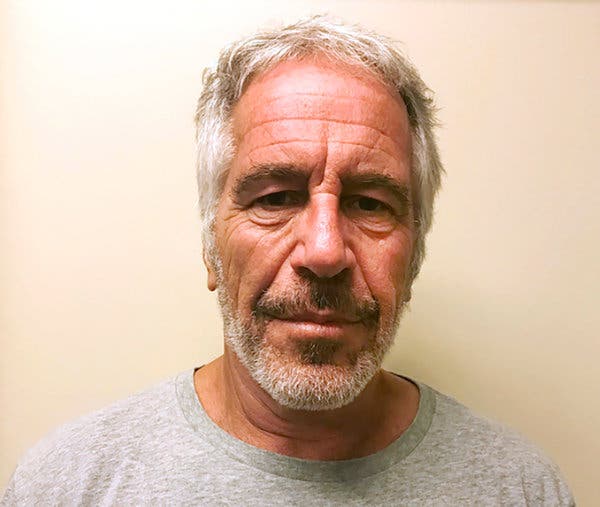
A forensic pathologist hired by the brother of Jeffrey Epstein says the injuries that killed the multimillionaire sex abuser were consistent with strangulation — not a death by suicide, as a New York medical examiner reported. Dr. Michael Baden says a broken bone in Epstein’s neck is “extremely unusual in suicidal hangings and could occur much more commonly in homicidal strangulation.” The claim by Dr. Michael Baden, a former New York City medical examiner who has worked on high-profile cases during a five-decade medical career, is certain to reignite suspicions that surfaced immediately after Epstein.
Epstein was found dead in his Manhattan jail cell on August 10th as he awaited trial on federal sex trafficking charges. Epstein once counted President Trump and former President Bill Clinton among his high-profile friends. Prosecutors alleged that the previously convicted sex offender paid girls as young as 14 hundreds of dollars for massages before he molested them in his homes in New York and Palm Beach, Fla., between 2002 and 2005. Since he was awaiting trial in federal prison, federal agencies had jurisdiction over the investigation into his death.
Baden noted that the 66-year-old Epstein had two fractures on the left and right sides of his larynx, specifically the thyroid cartilage or Adam’s apple, as well as one fracture on the left hyoid bone above the Adam’s apple. “Those three fractures are extremely unusual in suicidal hangings and could occur much more commonly in homicidal strangulation.” There were also hemorrhages in Epstein’s eyes that were common in homicidal strangulation and uncommon, though not unheard of, in suicidal hangings, the forensic pathologist said.
While there’s not enough information to be conclusive yet, the three fractures were “rare,” said Baden, who’s probed cases involving O.J. Simpson, President John F. Kennedy, Martin Luther King, record producer Phil Spector, New England Patriots star Aaron Hernandez and many others. “I’ve not seen in 50 years where that occurred in a suicidal hanging case,” the 85-year-old said.
The ligature, or item used to tie something tightly, allegedly was made from a sheet that had been twisted and put around Epstein’s neck, Baden said. Evidence on the cloth material could help prove whether or not someone else was involved in Epstein’s death. “Whoever it is would have their DNA all over the ligature,” he said. “We don’t have those results yet,” he added, saying those results “should be reported quickly to give an idea and lessen the speculation.”
Chief Medical Examiner Dr. Barbara Sampson said in a statement that she is standing by her findings. “Our investigation concluded that the cause of Mr. Epstein’s death was hanging and the manner of death was suicide. We stand by that determination,” she told Fox News in a statement. “We continue to share information around the medical investigation with Mr. Epstein’s family, their representatives, and their pathology consultant. “The original medical investigation was thorough and complete,” she continued, adding that “there is no reason for a second medical investigation by our office.”
Read more
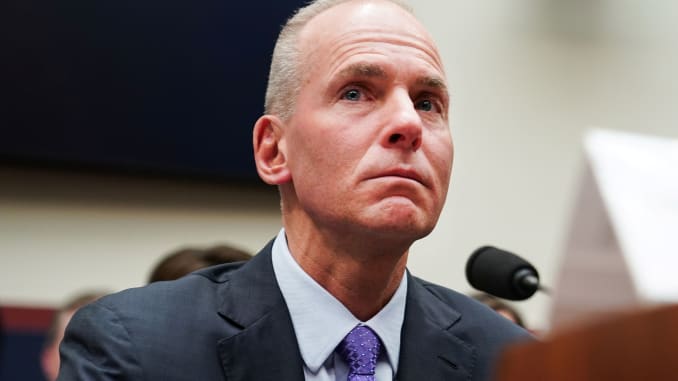
Boeing CEO Dennis Muilenburg testified before a pair of congressional committees for the first time since two deadly crashes of 737 MAX airliners, which killed a combined 346 people. His testimony follows a report in the Washington Post that top Boeing executives failed to intervene after two top pilots at the company identified problems with automated flight control software that would lead to the crashes in Indonesia and Ethiopia. The Justice Department is also conducting criminal investigation against Boeing. Muilenburg admitted Boeing failed to provide pilots with additional key safety system information.
During the hearing, Muilenburg acknowledged for the first time that he had been briefed, prior to the second crash, of messages from a test pilot who had raised safety concerns about the 737 Max. Boeing said it gave those messages to the Department of Justice in early 2019, but only alerted the Federal Aviation Administration and Congress to the existence of those messages in the past few weeks.
The House Transportation Committee released a redacted copy of a 2015 email in which a Boeing expert questioned making the flight system called MCAS depend on just one sensor to measure the plane’s pitch — its “angle of attack,” or AOA. Boeing went ahead with the single-sensor design, with no backup to prevent MCAS from pushing the plane into a dive. Investigators believe faulty readings from a single sensor triggered nose-down commands before both crashes. Muilenburg explained changes Boeing is making to the Max and other steps it is taking to improve safety. He conceded that the company “made some mistakes” in designing MCAS and telling regulators and pilots about the system.
Members of the House Committee on Transportation and Infrastructure also focused on why Boeing decided to only have one sensor on the outside of the plane, with no back-up, to alert pilots when the angle of the aircraft was off. They also asked why the plane’s safety system only gave pilots four seconds to react to take back control of the plane if a malfunction occurred. While acknowledging that Boeing planned to make fixes to the craft, some lawmakers also questioned why the company took so long to come to that conclusion. “We would do it differently if we knew what we know today,” Muilenburg said.
Several committee members pressed the CEO to make more changes in the aftermath of the crash, including giving up some of the $15 million in pay and bonus he received last year, out of $23 million in total compensation for 2018. Boeing successfully lobbied regulators to keep any explanation of the system, called MCAS, from pilot manuals and training. After the crashes, the company tried to blame the pilots, said Senator Richard Blumenthal, Democrat from Connecticut. “Those pilots never had a chance,” Blumenthal said. Passengers “never had a chance. They were in flying coffins as a result of Boeing deciding that it was going to conceal MCAS from the pilots.”
Representative Albio Sires also read a worker email sent to the head of Boeing’s 737 production team in mid-2018 that claimed high production goals were straining workers and increased the potential for mistakes. “For the first time in my history with Boeing I would be hesitant about putting my family on a Boeing airplane,” wrote the veteran Boeing employee. Muilenburg said he only became aware of the worker’s concerns after the Lion Air 737 Max crash October 29. He said the 737 production line was working at a “high rate” at the time and the issues raised by the now-retired employee had been investigated and addressed. Boeing, in fact, never cut back the production of the planes, despite the concerns. 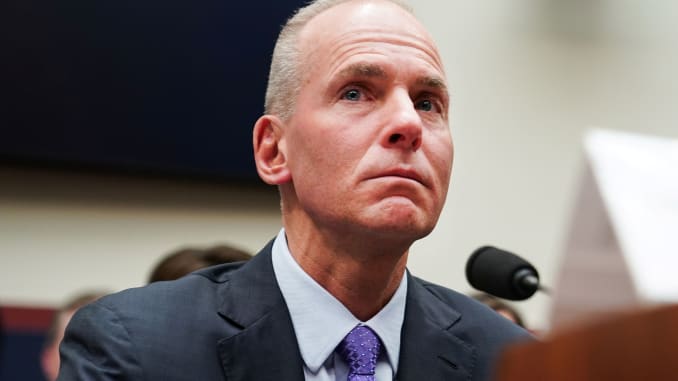
Read more















